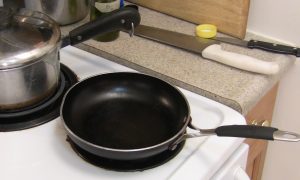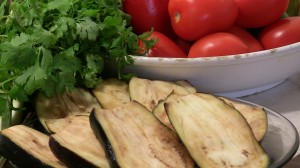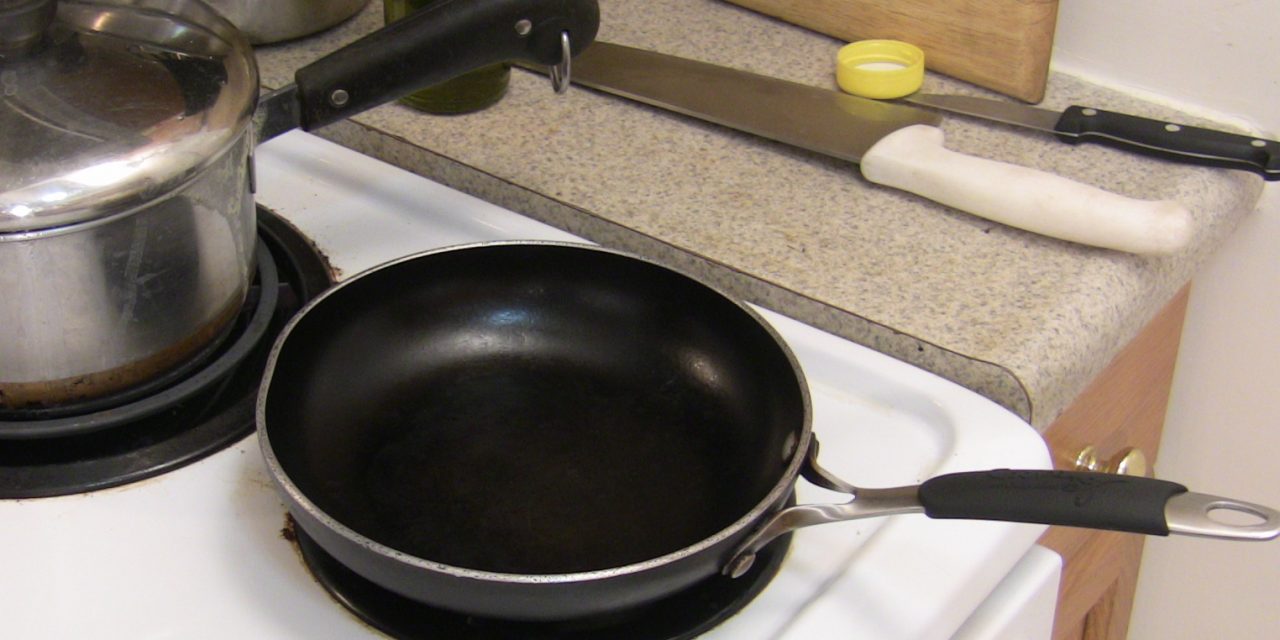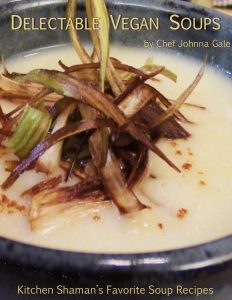 I’m not sure what you think about the recipes you find on the internet. Many food bloggers find recipes they like and re-share them. Some develop recipes and share them right away. Coming from the culinary industry, I have been a part of a culture that develops recipes and passes them on verbally, chef to chef. We don’t stop cooking to write something down; we tell each other. And that is how you end up with some meals on your plate when you go out to eat. The cook making that food learned it from the guy standing next to him, who learned it from a chef, and so on.
I’m not sure what you think about the recipes you find on the internet. Many food bloggers find recipes they like and re-share them. Some develop recipes and share them right away. Coming from the culinary industry, I have been a part of a culture that develops recipes and passes them on verbally, chef to chef. We don’t stop cooking to write something down; we tell each other. And that is how you end up with some meals on your plate when you go out to eat. The cook making that food learned it from the guy standing next to him, who learned it from a chef, and so on.
When I set out to develop a recipe, I have to stop and think about it. Cooking is instinctual, visceral. I make quick decisions. Working in commercial kitchens I’ve had everything at my fingertips. Cooking at home I have to stock up prior to cooking. In order to develop a recipe and share it with you, I have to stop and think through these steps. Do I have my camera? Do I have a notebook and pen? If not, is the computer nearby to take notes? Do I even have all the ingredients for what I am cooking? Double check shopping list. I’ve had to run out in the middle of a cooking session because I forgot that one vital ingredient. I have developed a schedule where I write down recipes that will be posted. Then I plan out a cooking session. This involves a grocery list of items I will need. Do I necessarily have the recipe? No. But I know what I want to cook.
This is the evolution of a recipe, from thought to plate. This is how it gets out of my head, into my hands, and onto this blog.
Developing an Eggplant Recipe
For this week’s recipe, I had eggplants. I wanted to do a fried eggplant steak, a riff on Eggplant Parmesan. The eggplant needs to be coated and breaded. I don’t use eggs, milk, or bread crumbs because of dietary restrictions, so I had to think about the available ingredients in my pantry to make this a successful gluten free, vegan fried eggplant steak recipe.
I sat down and sketched out a recipe, then followed it. I made a mixture of oat flour and spices. I tasted it and refined it some more, until I was happy with the result. Then I considered the traditional steps of breading: 1) flour, 2) egg wash, 3) bread the product. I skipped the first step and coated the eggplant with coconut milk, then breaded the cutlets. Don’t ask me what I was thinking. It was a crucial mistake. The flour helps the milk stick, which helps the coating stick. Usually in these recipes the ingredient used is Panko bread crumbs, a very specific type of product developed for breading. It is used in almost every kitchen I’ve ever worked in. We dredge everything from eggplant to pork chops in Panko. I chose to use oat flour, which comes close to the texture of bread crumbs.
On to the next step: Frying. I know, it is going out of fashion, but I still love fried food. I filled my pan up to just below where the eggplants would not be fully submerged, and let the oil do the work. Then I drained them. When I took them out, one was falling apart on me, so I tried it. It was not bad. Next time I’ll add more seasoning, and I won’t skip the flouring step. See above.
I realized when I took the steaks out of the pan, they are brown. I have brown lentils right now for pilaf, not red and I plan on using pesto for the sauce, not an Italian tomato sauce. So now what do I do? The colors on the plate would be brown, white, and green. Not very appealing visually. See, for me, a recipe has two steps, how you cook it, and how it looks on the plate. I may have to do just a little tomato puree, just to get the color and acidity right. Still red, green, and brown? Need to work on the color scheme. (Garnishes are important for a reason!)
While I am rethinking how it looks on the plate, I’m also thinking about the flavors and the structure of the food. Do the flavors and textures work together? Is the color palette pleasing, will my diners get excited just to have a bite of this latest creation?

Why I Do the Work
I cook because I have a drive, an impetus to take a pile of raw ingredients and transform them. I enjoy feeding people. And I like sharing what I learn with others. That means writing it down. The process can be long, involved, and arduous, yet rewarding. That moment when you take a bite of my food and smile, or when you make the recipe, and get it. That’s why I cook; that’s why the recipe process is so important.
I was continually asked if I wrote down the recipes I was cooking for my partner early in our relationship. The answer was no. I was learning in kitchens, gaining knowledge first hand, then coming home and applying that knowledge in my own kitchen. Write it down? That’s crazy talk. How can I take time to stop in the middle of the creative process and scribble down the exact amount of a coffee mug of vegetable stock or a pinch of salt or a squirt of apple cider vinegar? Then it occurred to me that writing it down could lead to making a cookbook someday, or sharing the recipe with you on this blog. It changed my perspective.
Most professional cooks do not write down their recipes. We are given recipes by chefs. They are the ones who take the time to write it down. We tell each other what we learned or saw and we duplicate it. The particular gift of a professional cook or a chef is being able to retain many recipes and many techniques in our heads, while simultaneously pulling down a hard dinner service. So I had to learn. Write it down in a format you will understand. Take a picture. That’s really important. Share it. That’s what gives a recipe life. Eat it. That’s what makes the process worth it.



